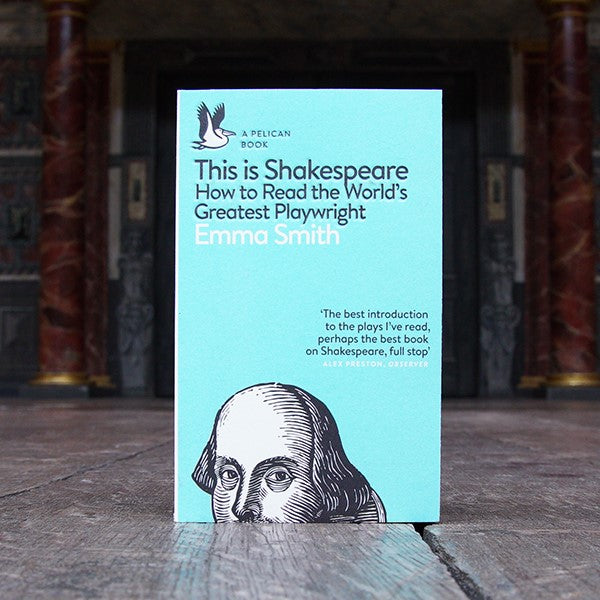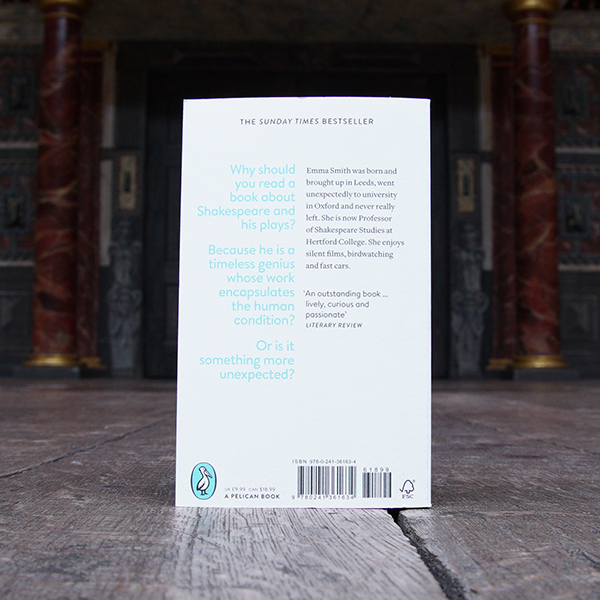Why should you read a book about Shakespeare and his plays? Because he is a genius whose work encapsulates the human condition? Or is it something more unexpected?
A genius and prophet whose timeless works encapsulate the human condition like no others. A writer who surpassed his contemporaries in vision, originality and literary mastery. Who wrote like an angel, putting it all so much better than anyone else.
Is this Shakespeare? Well, sort of.
But it doesn't really tell us the whole truth. So much of what we say about Shakespeare is either not true, or just not relevant, deflecting us from investigating the challenges of his inconsistencies and flaws. This electrifying new book thrives on revealing, not resolving, the ambiguities of Shakespeare's plays and their changing topicality. It introduces an intellectually, theatrically and ethically exciting writer who engages with intersectionality as much as with Ovid, with economics as much as poetry: who writes in strikingly modern ways about individual agency, privacy, politics, celebrity and sex. It takes us into a world of politicking and copy-catting, as we watch him emulating the blockbusters of Christopher Marlowe and Thomas Kyd, the Spielberg and Tarantino of their day; flirting with and skirting round the cut-throat issues of succession politics, religious upheaval and technological change. The Shakespeare in this book poses awkward questions rather than offering bland answers, always implicating us in working out what it might mean.
Every purchase supports the work of Shakespeare's Globe. Thank you!
Detail
Author: Emma Smith
Format: Paperback
Pages: 349
Staff Review
Emma Smith is Professor of Shakespeare Studies at Hereford College, Oxford but this is no dry, academic offering. Smith teaches, informs and guides us to new ways of understanding Shakespeare with a book full of imaginative new ideas told with passion and humour. Laugh out loud moments include her judgement that one of the plays is more Dr. Freud than Dr. Seuss and another is less History play, more Hello magazine.
Sandwiched between a lively introduction and a succinct epilogue Smith covers a single play in each chapter. I found myself eagerly turning the page to discover how she would approach the next play. The chapters, though, do not stand in isolation as she links them to each other in the process of building her theories and arguments.
Sometimes Smith uses Shakespeare’s sources as the way in and discusses the significance of deviations from, and outright revision of, the original story. For one of the plays she cleverly examines it through a single, seemingly minor, character. Several chapters explore Shakespeare’s experimentation with genre and in others she probes the question of the plays being autobiographical ( or not).
For Smith the language of Shakespeare is undeniably beautiful but she argues, convincingly, that the gaps and silences speak volumes too. Lack of clear stage direction or characters missing from the source material interest Smith greatly. She then investigates the implications of such gaps. It is this ambiguity Smith persuasively suggests that allows space for the continual reinterpretation of Shakespeare for different people, in different places, at different times.
The treatment of women, racism and colonialisation impact on modern audiences and are understandably addressed by writers on Shakespeare and Smith is no exception. Her contribution to such discussions is fresh and thought provoking. She often widens the focus to talk of the reaction of audiences in other eras too. What would these issues have meant to Shakespeare and his contemporaries for example.
Shakespeare, of course, had his own contentious topics in the late sixteenth and early seventeenth centuries. Religion and what good governance looked like, for instance, are recurring themes and there are plays that have parallels to the Elizabethan succession question. On how Shakespeare portrayed these concerns Smith is excellent. She asks if we can ever truly know what Shakespeare’s attitude was to such things as Catholicism, suicide, hereditary monarchy and so on but also she asks does it matter if we can’t? Smith frequently asserts that Shakespeare asks more questions than he answers but for Smith this is by no means a bad thing. On the contrary it adds strongly to her gap and ambiguity arguments.
There is consideration also of Shakespeare’s craftsmanship. Presenting the plays in the accepted chronological order Smith shines a light on how his writing developed over his career and she has an interesting take on what the latter collaborations might indicate. Again she reminds us of historical context. Shakespeare wrote for the actors around him. Sometimes a move to a different type of character may not have been a deliberate change of style but may simply have resulted from a new player presenting him with opportunities previously unavailable to him. Smith also considers how writing for an indoor playhouse may have influenced the type of plays he wrote.
The title of this book talks of how to “read” Shakespeare but Smith means the word in a wider sense. It is not about words on a page but reading as understanding, interpreting signs, looking at clues to meaning and intent. So each chapter considers how these plays physically appeared on stage. If we only read them we will miss details that would be obvious to an Elizabethan or Jacobean theatre goer, such as the necessity of doubling up of parts. If we fixate on the significance of a character disappearing from view we should remember, Smith tells us, it could just be that the actor is required to be on stage as another character. Smith presents several examples of this to illustrate the care we should take not to assume meaning from such things.
The only disappointment for me in this wonderful book is that Smith only covers twenty of the plays. I would happily have read more of her witty, clever prose. This book is, of course, not the definitive work on how to read Shakespeare but it’s a wise choice. Smith acknowledges herself she could have approached the Canon from many other angles. Surely, though, that is the point. Shakespeare is the gift that keeps on giving.
Emma Smith also gives us a gift. She motivates the Shakespeare lover and arouses curiosity in the Shakespeare novice to read, see and hear the plays. Smith’s fascinating insights will enrich these experiences of , as the title of this book says, the World's Greatest Playwright.
Review by Cheree (Visitor Operations Assistant)




